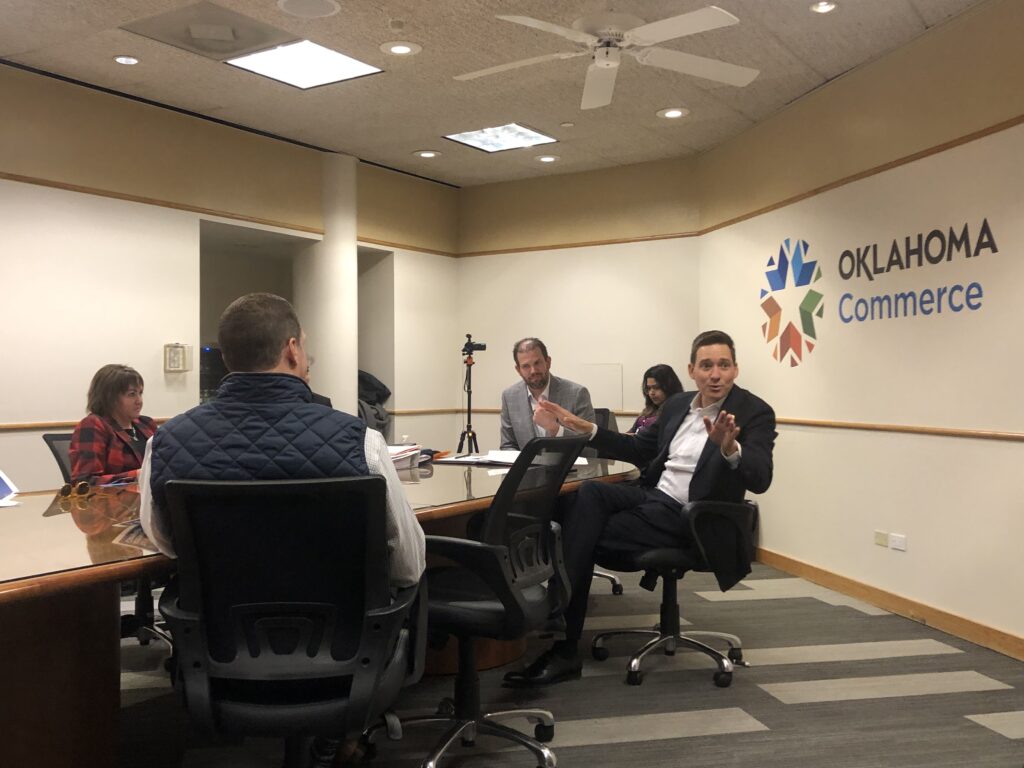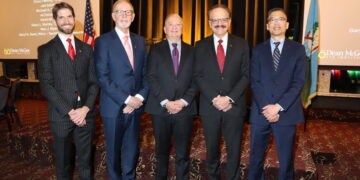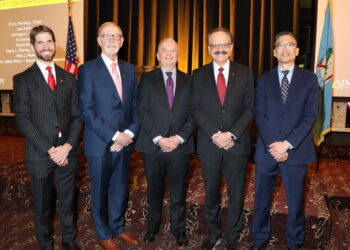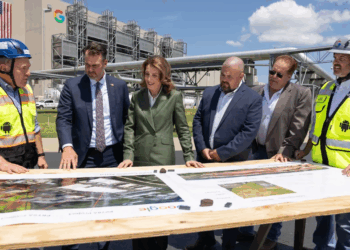OKLAHOMA CITY (OBV) – Lt. Gov. Matt Pinnell says infrastructure development is needed to facilitate workforce and economic growth in Oklahoma.
Pinnell shared his thoughts on how to grow the state’s workforce during the most recent Oklahoma Workforce Commission meeting at the Oklahoma Department of Commerce. He went in-depth about what it will take to build Oklahoma’s workforce to meet the current and future demands of industries and businesses across the state.
The availability of a skilled workforce that is qualified to fill in-demand jobs across Oklahoma continues to be a major concern throughout the state, Pinnell said to Workforce Commission members.
“There’s not a conversation that I have or, frankly, most legislators today have where the conversation doesn’t go back to workforce challenges that small business owners and cities across the state of Oklahoma have,” Pinnell said.
State officials spent considerable time speaking with business owners, city managers and mayors across the state in an extensive effort to identify obstacles preventing workforce growth, according to Pinnell.
“The overarching theme is infrastructure in these communities,” Pinnell said.
Pinnell cited Durant as an Oklahoma community on the cusp of substantial growth. But he also said Durant is in need of infrastructure improvements to meet the demands of such growth.
“Durant should have no problem doubling in size over the next decade. They’re the front door to Dallas. They’ve got all the advantages that the city needs, but they have a 10-inch water line that runs through the center of their town,” the lieutenant governor said.

Infrastructure shortcomings are an issue in rural and urban areas alike, as well as bedroom communities, according to Pinnell.
He said cities and towns across the state rely on infrastructure that is around 100 years old.
“It’s growing pains is what it is,” Pinnell said. “[These communities] want to grow – they need to grow. They need more rooftops, but they can’t put rooftops in because [of inadequate] water lines and sewage lines and those types of issues.”
There is not an easy solution to solving Oklahoma’s infrastructure problem, Pinnell said.
“That gets into a much larger and, some would say, contentious conversation because it gets into how other states levy taxes,” Pinnell said. “And this gets into the property tax conversation. Oklahoma, I believe, is the only state in the country that has a tax system like we do, but I also don’t want Texas’s property taxes. But if you look at some of those smaller communities in the state of Texas, when they can tap into their ad valorem tax base, they have very, very good public infrastructure because of it.”
Oklahoma does not have a statewide ad valorem (property) tax.
Pinnell challenged the Workforce Commission to speak with city managers and mayors about the inadequate infrastructure issues they face.
Oklahoma legislators are beginning to look into the statewide infrastructure issue, according to Pinnell.
“If we’re going to grow, we have to have the infrastructure that meets the demands for that growth,” Pinnell said.
The Workforce Commission began meeting at the start of 2024, and routinely invites state, business and education leaders to speak during the meeting and share their insight on Oklahoma’s workforce needs as well as information on previous and current efforts to meet those needs.
Senate Bill 621 established the Oklahoma Workforce Commission when it was signed into law in June 2023.
The Workforce Commission works to coordinate the state’s workforce efforts. Their objective is to streamline workforce processes into a more efficient and effective system that will grow the economy and produce greater numbers of skilled workers.
SB 621 was born from research which revealed a workforce deficiency in Oklahoma. A State Chamber and Business Roundtable joint survey found that 60 percent of Oklahoma’s business community said workforce shortages were the number one threat to business growth and expansion. Chad Warmington, president and CEO of The State Chamber of Oklahoma, and The State Chamber Research Foundation provided Gov. Kevin Stitt and legislators research data which showed that Oklahoma was 36,000 workers deficient in filling available jobs.
It was determined that a new, focused workforce management system was needed to grow the state’s workforce and fill the thousands upon thousands of available jobs.
The Commission is composed of nine members, each a representative from Oklahoma’s private business sector. It has been meeting since January, gathering information from state officials and leaders across the state’s industrial sectors. The Commission will rely on that information when creating workforce development strategies and administer and oversee funding allocated by the legislature for workforce development initiatives. The commission can contract with outside parties to achieve its goals.

















